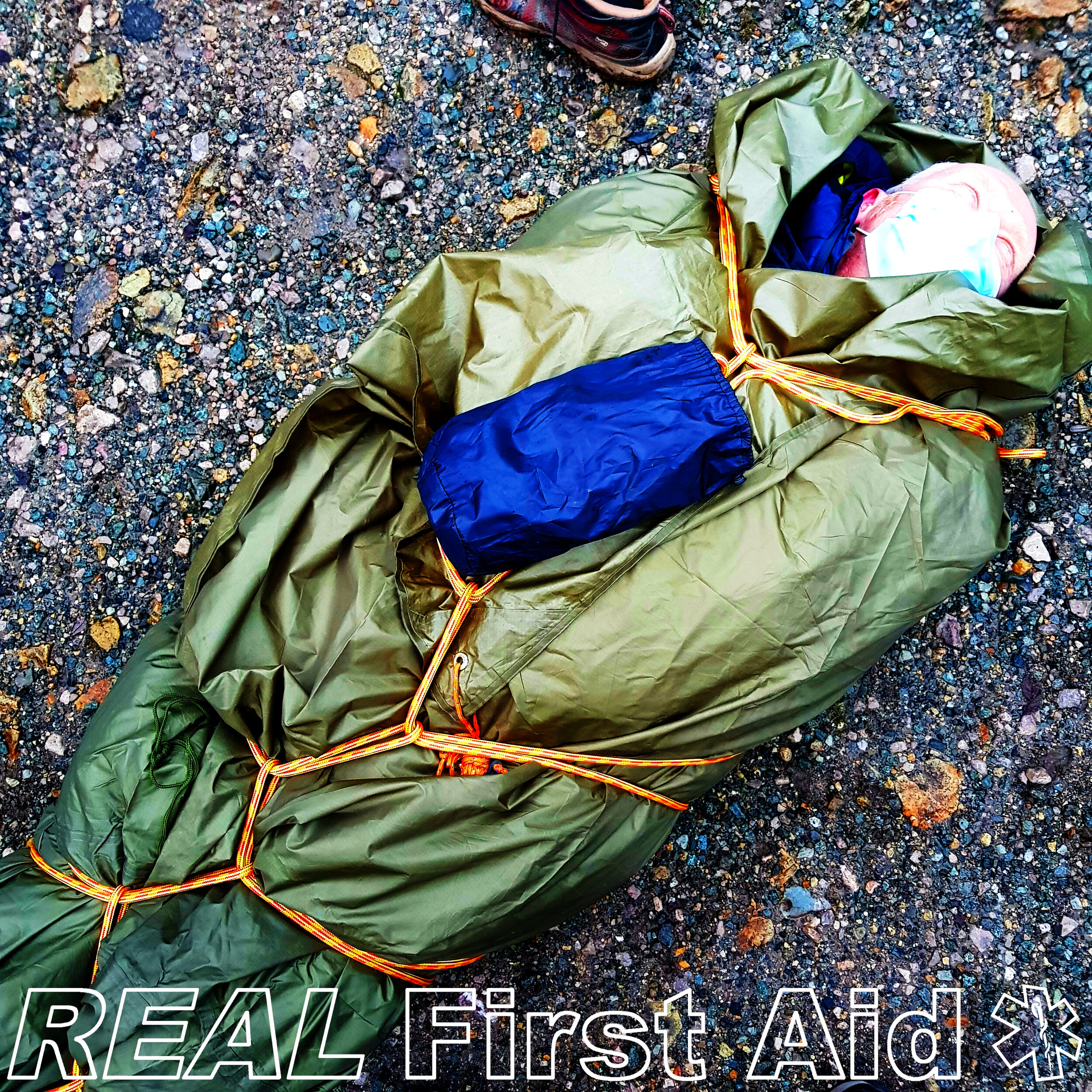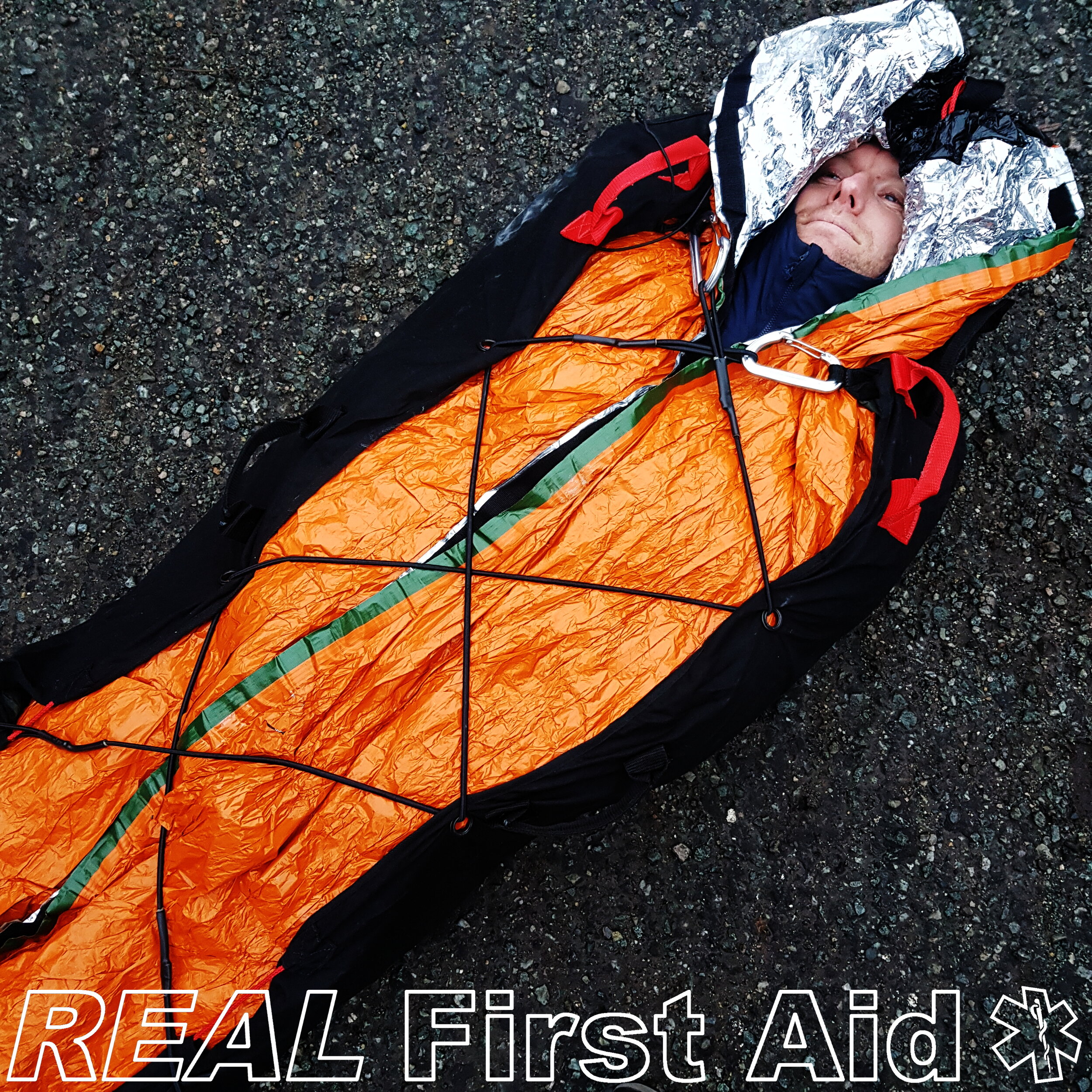Packaging Hypothermic Casualties
10th November 2019
Managing hypothermic casualties in a remote environment presents serious challenges to the responder; to combat the cold we need to prevent heat loss and provide heat to the casualty. We can improvise a lot of things but improvising heat is difficult.
Hypothermia is not only an issue in cold environments, trauma casualties are at significant risk of hypothermia. Heat is generated as a by-product of metabolism and aerobic metabolism relies on oxygen being delivered to the cells by red blood cells. If a casualty is losing blood, they are losing red blood cells and, therefore, the amount of oxygen that's delivered to cells.
66% of Trauma patients become hypothermic and almost all patients suffer a drop in core temperature. (1) Mortality is neatly twice as high (53%) in patients with a core body temperature <32°C compared with patients with a core body temperature of <34°C (28%). (2,3)
Trauma casualties get cold and cold trauma casualty’s die quicker.
Passive Rewarming
Insulation works by reflecting or trapping heat generated by the casualty. For the shivering hypothermic casualty this can achieve passive rewarming. We can provide them with the energy they need in the form of glucose, backed up with complex carbohydrates. This is not possible or indeed desirable for trauma casualties.
50-60% of heat loss can be attributed to radiant heat loss at low temperatures in a still room (4). Aluminized Mylar (or space blankets) can – in theory - reflect back up to 90% of emitted infrared radiation. (5) In one simulated trial by Mortimer et al, vessels containing warmed fluids retained their heat for longer when wrapped with a layer of fleece and mylar compared to a layer of fleece and plastic sheet. (6)
In clinical settings, however, reflective blankets by themselves have not helped hypothermic patients to rewarm spontaneously. (7, 8).
The outdoors is a very different environment to a clinical setting. In remote environments we have the added issue of convectional heat loss. In the Mortimer trail (6) there was no difference with the mylar placed next to the vessel or the fleece but in an outdoor setting where the casualty is exposed to the wind, mylar blankets should be placed outside of insulative layers to trap air and reduce convective heat loss.
We also have issues of conductive heat loss with casualties laying on the ground and evaporative heat loss if they are wet.
Training exercise with a Blizzard Bag
An improvement on the space blanket is the Blizzard Bag, a sleeping bag style wrap made from 2 or 3 layers of mylar. In a more recent studies, the Blizzard Bag was shown to be significantly more effective than a mylar blanket alone, or a wool blanket in heat retention. (9, 10)
The Blizzard Bag is a 3 layer bag with full length velcro closer, two side access slots, secured by velcro and top and bottom drawcord closures. We carry the 2-layer EMS Blizzard Blanket - a simpler version which features just one ‘peal-and-seal’ tape closure as a compromise between size, weight and functionality.
L-R Ready-Heat Chemical Warming Blanket, Blizzard 3 Layer Bag (385g), Blizzard 2 layer EMS Blanket (250g), Lifesystems 1 Layer Survival Bag (180g), Mylar space blanket (30g).
Active Warming
For the trauma casualty we want to prevent shivering. A casualty that is shivering will not just have a higher demand for energy but a 400% higher demand for oxygen and increase intercranial pressure. (11). This is only ever going to make the poorly perfused, hypovolaemic casualty worse.
For the trauma casualty and non-shivering hypothermic casualty we need to actively warm them. Active rewarming is now the standard care recommended in both civilian and military environments for trauma casualties. (12,13)
Actively warming casualties in a remote environments presents significant challenges as most methods of heat production are heavy and require fuel.
Group Shelters
Anyone working with groups in the outdoors has no reason not to be carrying a group shelter. Group shelters or ‘bothy bags’ can generate a significant amount of heat radiated and respirated from the occupants…when there are enough occupants to fill one.
Hot water bottles
If you have a stove, water and a few water bottles, these can be filled with hot water and strategically placed around the casualty’s body – the groin, armpits, neck and chest. Bottles should be placed in socks or wrapped in clothing before being placed next to the skin to prevent burns.
Chemical Heat Blankets.
Products such as the Ready Heat provide 40oc heat for 6-8 hours. The pack size is about A4 by half an inch thick. This is our recommended product for anyone operating in cold environments.
The efficacy of Chemical Heat Blankets (CHB) are greatly diminished when they are applied to wet clothing (14) so wet clothing should be cut away (in a sheltered environment), damp clothing need not be removed. Because the peak temperature of CHB can reach over 60oC, CHBs should not be applied directly to bare skin, neither should compression straps be placed over them (14).
Bare in mind that CHBs can take 15-20 minutes to reach full temperature so consider preparing the CHB in anticipation.
The Hypothermia Burrito
You will need
Rope – a 25m throw line or walker’s confidence rope would be ideal. Paracord could be used but rope is better if you intend to carry the casualty.
A large sheet – a tarp, flysheet or group shelter
Sleeping mat
Sleeping bag or Blizzard Bag
Chemical Heat Blanket or Hot Water bottles - without these, the casualty is insulated but not warmed.
Optional - ski poles, walling poles, skis, paddles or tent poles to provide rigidity if you intend to carry the casualty.
1. Lay out the rope in a coil approximately 3 feet wide and as long as the casualty is tall. Tie a simple loop at the foot end.
If you want to stabilise the package, lay the poles, skis, etc along the rope at the approximate width of the casualty.
2. Place the tarp, arranged centrally over the coil of rope and place a sleeping mat on top.
3. Place a sleeping bag or Blizzard bag on top and position the casualty inside. Add hot water bottles or heat pads at the groin, axila, neck and chest or place a chemical warming blanket on top. Provide an insulating hat.
If the casualty is wet, remove wet clothing, wrap the casualty in a mylar space blanket to act as a vapour barrier to prevent the sleeping bag from becoming damp.
4. Fold the lower edge of the tarp up over the casualty’s feet and wrap the casualty, burrito style.
5. Take the first coil at the bottom edge of the burrito, immediately opposite the tied loop and pass it through the tied loop to create a 2nd loop.
6. Take the next coil opposite the 2nd loop and pass it through to create a 3rd loop. Pass the opposite coil through the 3rd loop and repeat.
7. Tie off the top coil with the top end of the rope.
You now have a well packaged casualty:
They are protected from evaporative and convective heat loss due to the tarp.
They are protected from conductive heat loss due to the sleeping mat.
They are protected from radiated heat loss due to the sleeping bag or blizzard bag.
They are actively warmed.
They are able to be carried using the ropes as handles, if needed.
Further Reading - An Improvised Rucksack Stretcher
The contents of ones medic bag should be commensurate with ones risk assessment; it is not always appropriate to carry everything listed above. As a minimum our medic bags will always have a Ready Heat chemical warming blanket and an EMS Blizzard Blanket as well as a few mylar space blankets (which are principally for something else).
If our risk assessment include work in cold or remote environments, we supplement this with:
A cheap 3 season sleeping bag. We would love to say we use some schmexy tactical warming system like the North American Rescue HPMK but despite advances in technology, mylar survival systems are never as warm as a 3 season sleeping bag, even one which cost £20 on the high street. It is going to get soiled, dragged across the ground and probably cut off the casualty so it is a disposable item. They are big and bulky but its singular merit outweighs both cons.
An Xtract2 SR stretcher (or ‘litter’ for our US friends). We have tried many folding or collapsible stretchers over the years and this one ticks a lot of boxes. We use the MIBS stretcher for vehicle based operations but the Xtract2 is lightweight, will fit in a rucksack and, unlike many compact stretchers, is actually usable and durable.
A tapered self inflating mattress. These offer significant insulation and comfort compared to a closed-cell foam sleeping mat. The Xtract2 is also designed with a sleeve to accommodate a tapered sleeping mat. Again, this should also be considered as disposable so we stock up on the cheapest internet deals or pound-shop bargains we can find.
This is supplemented with the Ready Heat blanket for warmth and the EMS Blizzard Blanket to act as a vapour barrier liner to create a formidable system.
L-R: Xtract2 stretcher, budget self-inflating mattress, EMS Blizzard Blanket, budget 3 season sleeping bag, Ready Heat II chemical warming blanket.
A casualty packaged in a budget system comprising a cheap foam sleeping mat and sleeping bag, foil blanket as a vapor barrier liner, tarp and rope.
A packaged casualty in a lightweight but more expensive system comprising Ready Heat blanket, Blizzard Bag, self inflating mattress and Xtract II stretcher.
When working in cold environments, never is the old adage more true:
Failing to prepare is preparing to fail
References
Frisch DE. (1995) “Hypothermia in the trauma patient”. AACN Clinical Issues, 6(2), 196. 27.
Jurkovich GL, Greiser WB. (1987) “Hypothermia in trauma victims: An ominous predictor of survival.” Journal of Trauma. 27(9) 1019.
Tsuei BJ, Kearney PA. (2004) “Hypothermia in trauma patients”. Injury. 35:7-15.
Hardy JD, DuBois EF. (1937) “Regulation of Heat Loss from the Human Body.” Proceedings of the National Academy of Sciences of the United States of America. 23:624-631.
Domen SR. (1991) “Emissivity of Aluminized Mylar”. Radiation Physics and Chemistry. 37(2):199-201.
Mortimer RB, Moya MN, Mortimer AR and Hurtt HH. “Utility of Aluminized Mylar to Decrease Radiative Heat Loss” Aluminized Mylar for Hypothermia. http://sportdocbox.com/Scuba_Diving/127988357-Aluminized-mylar-for-hypothermia-utility-of-aluminized-mylar-to-decrease-radiative-heat-loss.html Accessed 10th October 2019
Greif R, Rajek A, Laciny S, Bastanmehr H, Sessler DI. (2000) “Resistive Heating Is More Effective Than Metallic-Foil Insulation in an Experimental Model of Accidental Hypothermia: A Randomized Controlled Trial.” Annals of Emergency Medicine. 35(4):337-345.
Borms SF, Engelen SLE, Himpe DGA, Suy MRR, Theunissen WJH. (1994) “Bair Hugger Forced-Air Warming Maintains Normothermia More Effectively Than Thermo-Lite Insulation.” Journal of Clinical Anesthesia. 6:303-307.
Allen PB, Salyer SW, Dubick MA, Holcomb JB, Blackbourne LH. (2010) “Preventing hypothermia: comparison of current devices used by the US Army in an in vitro warmed fluid model.” Journal of Trauma. July; 69 Suppl 1:S154-61.
Beeghly A, Caudell M. (2010) “A Comparison of Survival Blankets in Cool Ambient Temperature” from Selected Abstracts From the 2010 Annual Scientific Meeting.” Wilderness & Environmental Medicine. 21, 373–378
Rosa G, Pinto G, et al. (1995) “Control of post anesthetic shivering with nefopam hydrochloride in mildly hypothermic patients after neurosurgery.” Acta Anaesthesiologica Scandinavica. 39:90-5
National Emergency Medical Technicians (2018) Prehospital Trauma Life Support Manual. 9th ed. Burlington, MA: Jones & Bartlett;
The Committee on Trauma. (2010) Advanced Trauma Life Support Student Manual. 9th ed. Chicago, IL: American College of Surgeons
Greene M, Long G, Greene K, Wilkes M. (2023) “Performance of a Chemical Heat Blanket in Dry, Damp, and Wet Conditions Inside a Mountain Rescue Hypothermia Wrap”. Wilderness & Environmental Medicine. 2023;34(4):483-489.


